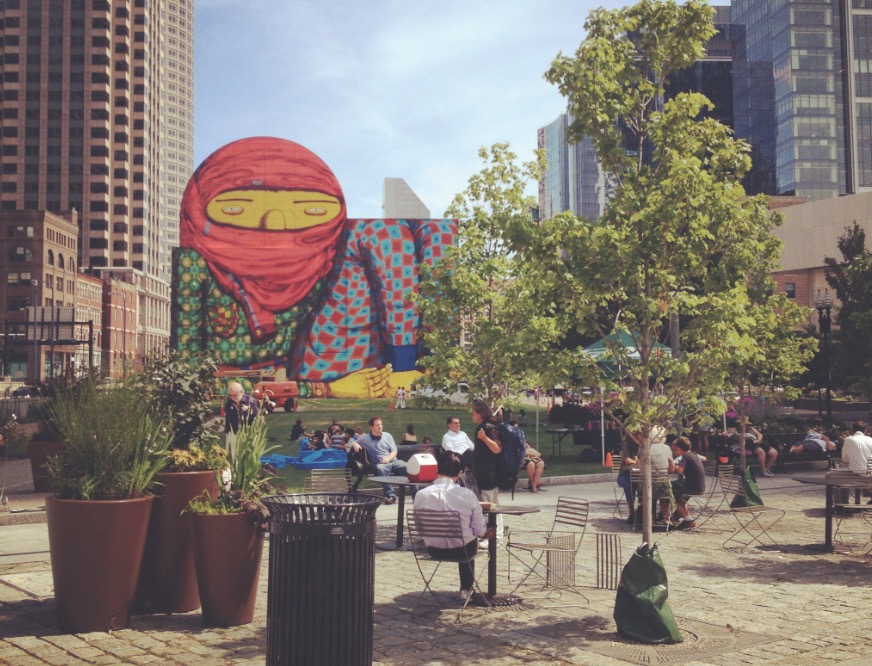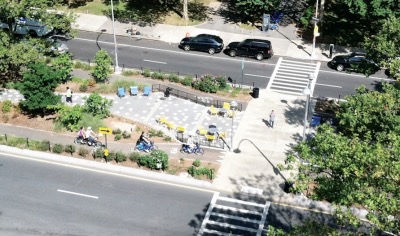In some ways, is a rejection of wonk — a way to show and not tell.
That characterization comes from a new book on the subject, Tactical Urbanism: Short-Term Action for Long-Term Change, by two of the buzz-term’s leading advocates, Mike Lydon and Anthony Garcia. Released this year, it delves into the phrase’s history, presenting trends, examples and stories from a movement still defining itself.

It started with a South Florida city plan. Released in 2010, Miami 21 was a massive land-use overhaul, featuring transit-oriented development, pedestrian-friendly streets and interconnected parks. For Lydon, who’d taken a job as a consultant soon after graduate school, it was “innovative and complex, a dream assignment for a young and idealistic planner like me,” he writes in the book’s intro.
But in the grand and hair-tearing tradition of zoning overhauls, it was also long, technical and difficult to communicate.
From our partners:
“The average person, renter or citizen who didn’t follow these issues had no way of being involved,” Lydon tells me. “It was recommended that they go to the standard evening and weekend meetings and workshops, but there were issues of access and time and just not being able to understand the plan.”
Those meetings and workshops, he adds, “didn’t represent the full public sphere.”
One person who did show up, time and again, was transit advocate and architect Anthony Garcia. With a planning background himself, Garcia knew what was at stake.
“I knew the terminology,” he says. “But for others it was a very tough sell.”
Both men realized that public engagement, that thing that is supposed to drive democracy, just wasn’t happening. Around the same time, each experienced an infrastructure-related aha moment.
For Lydon, it was the approval of Bike Miami Days, when downtown streets were shut to cars.
“To our delight, thousands of people showed up to the first event in November 2008, and not just the spandex-clad MAMILs (“Middle-Aged Men in Lycra”),” he writes.
For Garcia, it was a trip to a New York toy store in Times Square with his then four-year-old son. That morning, Broadway had been converted into a pedestrian plaza “with lawn chairs and orange plastic barrels” he writes. After years advocating for Miami 21, the simple, cheap immediacy of this quick retrofit “hit me in the face,” he says.

Both began circling a similar idea: What if city planning were quicker, cheaper and allowed to fail? What if, instead of dozens of meetings and then a bike lane pilot, the pilot went up first as an experimental part of the process? What if people were shown what’s possible (quickly, cheaply, maybe even with orange plastic barrels) rather than told with white slips, agenda packets and long meetings that they may or may not be able to attend?
The book defines tactical urbanism along those lines, as “an approach to neighbourhood building and activation using short-term, low-cost and scalable interventions and policies.”
In Portland, an un-permitted meeting space turned into a mobile tea house on the back of a Toyota pick-up truck (yes, it was very Portland).
In Memphis, an energized group of advocates took revitalization into their own hands, raising private and crowdfunded donations to revamp Broad Avenue. Their campaign featured a two-day demonstration of how the forgotten former main street could look using pop-up shops and hand-painted crosswalks and bike lanes. With the help of Facebook, the group drew about 15,000 people and kickstarted more than $20 million in investment.

DIY efforts like these aren’t new, the book points out. Still, Lydon and Garcia’s tactical urbanism borrows from a very 21st-century language and culture: that of the tech startup.
“Tech entrepreneurs look to the tenants of The Lean Start-Up, which is a product development method advocating rapid prototyping as the inception of the deliberately agile “Build-Measure-Learn” product development cycle,” the book states, admiringly.
And despite its democratic premise, viewing tactical urbanism through a Silicon Valley lens raises several questions. In the Age of Uber, when, Sam Bliss writes for Grist “sharewashing is the new green-washing,” words like “lean” and “agile” sometimes carry troubling undertones, reflecting a desire for market-centered disruption that benefits only a few savvy CEOs. As more neighborhoods sound alarm about the displacement effects of environmental gentrification, shouldn’t we institute more meetings and notices, more protections, more wonk, not less? Those long, technical, delayed planning processes aren’t just bureaucracy at work, they’re an attempt to hear everyone.
Lydon and Garcia aren’t blind to this, and spend a section discussing the origins of pluralism in city planning, going back to the urban renewal craze that displaced and burdened so many communities of color. According to Lydon, the movement isn’t about cutting public process, but shifting it to a more tangible — tactical — form. It’s about cheap, quick models that can be modeled, debated and even discarded, with community involvement the whole way, rather than explained with legalese. It’s that old creative writing mantra: Show, don’t tell.
“We’re trying to get more equity into the process,” he says.
This feature is written by Rachel Dovey and originally appeared in NextCity.














